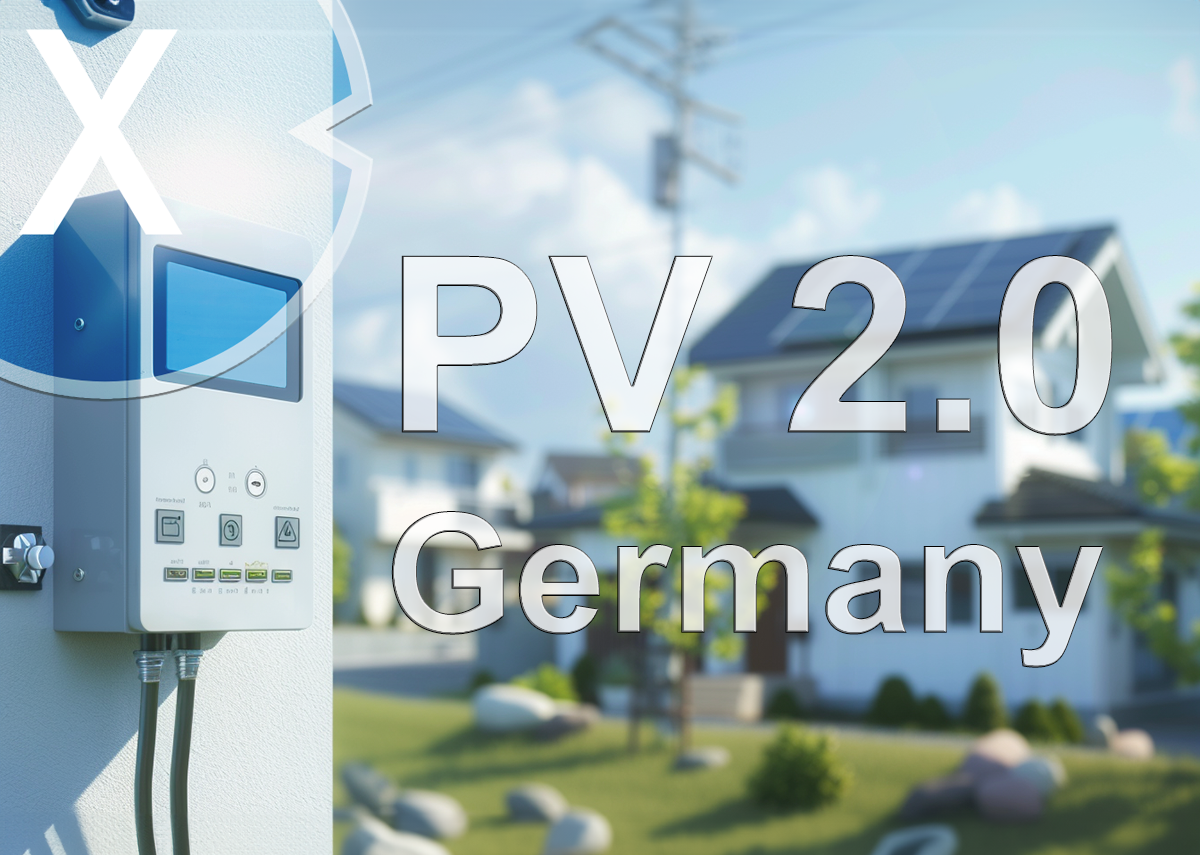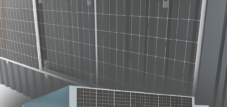
PV/Solar: Photovoltaic system 2.0: An economical solution with battery storage, dynamic electricity tariffs and intelligent control - Image: Xpert.Digital
🌞📉 Regardless of feed-in tariffs: make optimal use of photovoltaic systems
📈📉 Photovoltaic systems have established themselves as a central pillar of the energy transition in recent years with the state-guaranteed feed-in tariff. By using solar energy, you can not only generate electricity in an environmentally friendly way, but also save money in the long term. Purchasing a photovoltaic system becomes particularly advantageous when it is combined with battery storage and a dynamic electricity tariff. With the right systems and the optimal configuration, feed-in tariffs, which have steadily declined in recent years, can even become completely irrelevant.
🌟 Without a feed-in tariff for lucrative photovoltaic system 2.0
For many homeowners, the decision to install a photovoltaic system involves major considerations. One of the crucial questions is the payback period, i.e. the period in which the purchase pays off through savings and feed-in tariffs. In this regard, the current trend towards dynamic electricity tariffs and intelligent control offers a future-proof option to maximize the profitability of PV systems.
🔄 Solar system 2.0: Dynamic electricity tariffs as the key to efficiency
Dynamic electricity tariffs are flexible tariffs that depend on current market conditions. This means that the prices for purchasing electricity can vary depending on supply and demand. Times of high electricity production, for example from wind or solar systems, often lead to an oversupply of electricity, which causes prices on the electricity exchange to fall. Conversely, prices rise when less electricity is produced and a lot of electricity is demanded at the same time. These fluctuations offer enormous advantages for homeowners with a photovoltaic system and battery storage. You can either use your own electricity yourself or feed it into the grid at particularly lucrative times.
A big advantage is that there are more and more hours with negative electricity prices on the electricity exchange, which means that electricity providers are essentially giving away their electricity in order to stabilize the network. For users of a dynamic electricity tariff, this means that they not only benefit from low electricity prices, but can sometimes even get money for purchasing electricity. In conjunction with an intelligent control system that automatically shifts power consumption to the most economical times, additional savings opportunities arise.
🤖 The role of dynamic AI intelligent control and battery storage
Photovoltaic systems that are equipped with battery storage and intelligent control enable users to optimally manage their own solar power supply. Battery storage stores excess solar power, which can be produced during the day and used at night or on days with little sun. The intelligent control takes on the task of coordinating electricity consumption in the household so that the self-generated electricity is used or stored at the optimal time. Such a system creates greater independence from grid power and reduces electricity costs in the long term.
The “Heartbeat AI” system from 1Komma5° provides an outstanding example of this type of optimization. As Philipp Schröder, founder and CEO of 1Komma5°, explains in pv magazine , an analysis of customer systems carried out between May and August 2024 shows that by combining the dynamic electricity tariff “Dynamic Pulse” with the AI-supported optimization of “ Heartbeat AI” impressive savings could be achieved. On average, monthly electricity costs fell by 80 percent compared to the average German electricity price, which means an effective price of around 7 cents per kilowatt hour. In 40 percent of the households analyzed, the electricity price was zero cents or less thanks to the optimization.
These figures illustrate how powerful such systems already are today and what potential they offer for the future. The combination of dynamic electricity tariffs, efficient battery storage and intelligent control makes homeowners active participants in the electricity market who not only purchase electricity, but can also act as electricity suppliers.
⚖️ Abolition of feed-in tariff – curse or Segen?
In recent years, the feed-in tariff, i.e. the amount you receive for feeding self-produced solar power into the grid, has fallen continuously. This represents an obstacle for many potential investors in photovoltaic systems, as the profitability of the systems is no longer guaranteed solely by the feed-in tariff. But the loss of the feed-in tariff does not necessarily have to be negative. On the contrary: the increasing spread of battery storage, dynamic tariffs and intelligent control makes it possible to maximize your own consumption of solar power and thus reduce your dependence on the feed-in tariff.
Homeowners who decide on a PV system can use the electricity generated themselves, store it or feed it into the grid at the best times. Due to this flexibility, the feed-in tariff is becoming less and less relevant, as the amortization of the system mainly comes from the savings made when purchasing electricity. In addition, the tax relief for the construction of private photovoltaic systems introduced in January 2023 creates additional incentives to invest in such a solution.
🔮 The future of photovoltaic systems in combination with dynamic tariffs
While dynamic tariffs are already widespread in some countries, they are still in their early stages in Germany. However, the advantages of these tariffs are enormous and, in combination with a photovoltaic system, offer great savings opportunities. The biggest obstacle currently is that many consumers are not yet sufficiently informed about the potential of these tariffs. Greater education and more offers on the market could help more and more households benefit from dynamic tariffs.
Another promising scenario for the future is the further development of intelligent control systems such as “Heartbeat AI”, which not only optimize electricity consumption in households, but can also automatically control electricity trading on the exchange. In an increasingly decentralized energy system, households could become mini-power plants, producing, storing and feeding electricity into the grid as needed. This would not only reduce electricity costs, but also help stabilize the entire power grid.
📌 PV systems 2.0 with AI
Photovoltaic systems in combination with battery storage, dynamic electricity tariffs and intelligent control represent an extremely lucrative and sustainable investment. The abolition of the feed-in tariff may seem like a setback at first glance, but the new technologies and business models offer enough incentives to invest in their own Investing in the future of energy. Anyone who invests in a photovoltaic system today is relying on independence, sustainability and long-term savings - a decision that not only pays off for the environment, but also for your own wallet.
Suitable for:
- ⚡🚨 Energy transition with strategy error
- ⚡🔋 Renewable energies: Now it's all about the energy storage systems
📣 Similar topics
- 🌞 Goodbye feed-in: photovoltaics of the future
- 🔋 Battery storage and dynamic tariff: The perfect combination
- ⚡ Negative prices: use electricity exchange phenomena to your advantage
- 🕹 Intelligent control maximizes self-consumption
- 🏡 Photovoltaic systems for homeowners
- 📉 Feed-in tariffs are no longer a must
- 🤖 Heartbeat AI: The future of energy optimization
- 📈 Dynamic tariffs as a future model
- 💡 Self-sufficiency through solar energy
- 📅 From feed-in tariffs to dynamic tariffs
#️⃣ Hashtags: #Photovoltaics #Energy transition #Dynamic tariffs #Battery storage #Intelligent control
We are there for you - advice - planning - implementation - project management
☑️ Industry expert, here with his own Xpert.Digital industry hub with over 2,500 specialist articles
I would be happy to serve as your personal advisor.
You can contact me by filling out the contact form below or simply call me on +49 89 89 674 804 (Munich) .
I'm looking forward to our joint project.
Xpert.Digital - Konrad Wolfenstein
Xpert.Digital is a hub for industry with a focus on digitalization, mechanical engineering, logistics/intralogistics and photovoltaics.
With our 360° business development solution, we support well-known companies from new business to after sales.
Market intelligence, smarketing, marketing automation, content development, PR, mail campaigns, personalized social media and lead nurturing are part of our digital tools.
You can find out more at: www.xpert.digital - www.xpert.solar - www.xpert.plus

